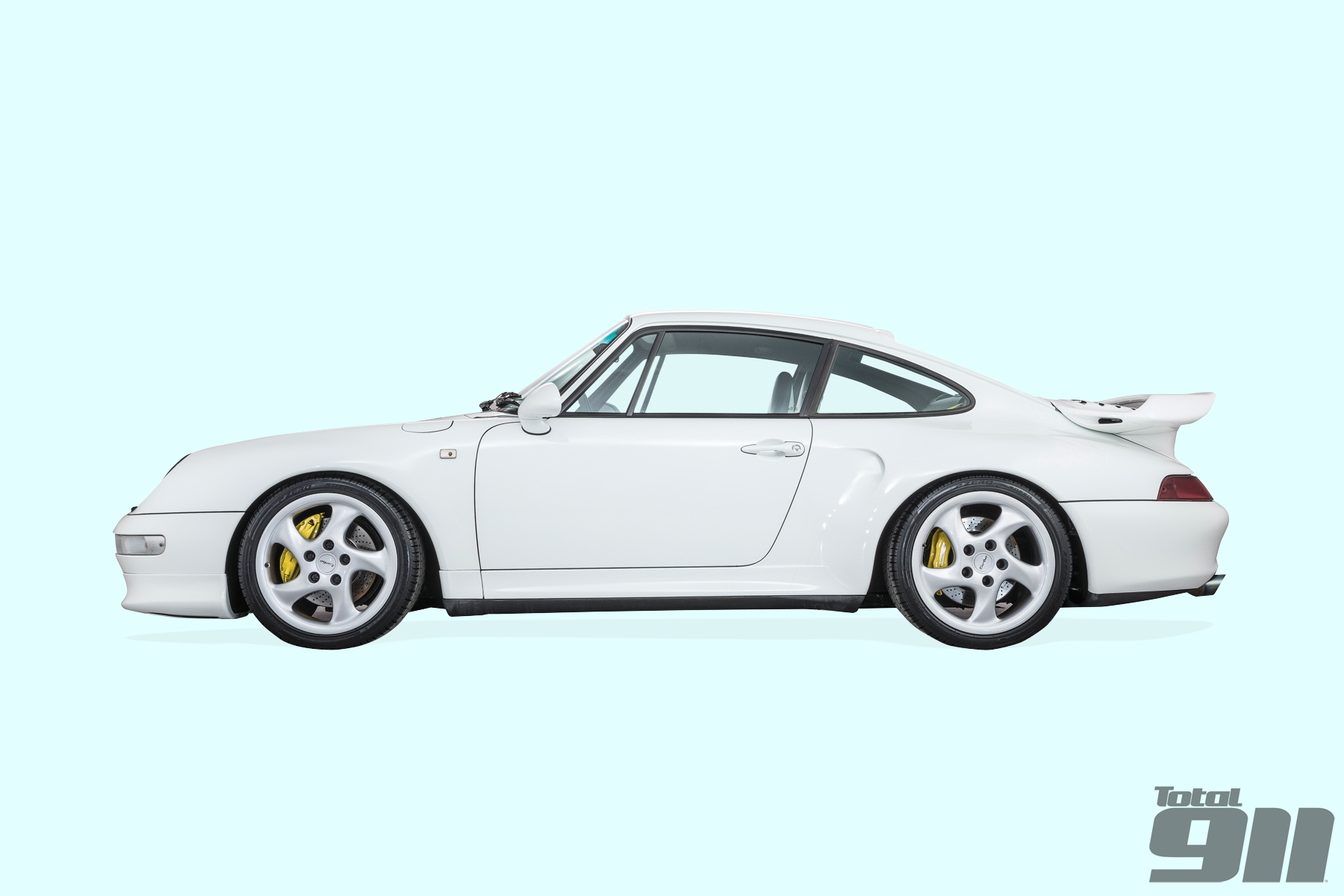The Porsche Index: 993 Turbo
Development of the Neunelfer has always been viewed as evolutionary, but since the 1984 launch of the 3.2 Carrera, Porsche was determined not to let the grass grow under the 911’s wheels.
That model was replaced by the substantially redesigned 964, a car that introduced modernities such as power steering, anti-lock brakes and four-wheel drive. By 1993 it was all change again, Tony Hatter’s interpretation bringing a smoother look and the promise of a body that was 80 per cent new.
More rigid and boasting new VarioRam-equipped engines and a sophisticated multi-link rear axle, the 993 proved hugely popular and was a fitting curtain call for the air-cooled era. But for the best part of a year, the range had lacked a crucial element, one that had featured on 911s for two decades.

That situation was remedied for the 1996 model year with the arrival of the Turbo. As befitting a range-topping 911, buyers who stumped up the £91,000 asking price were treated to a unique styling and aerodynamic package, which included voluptuously flared rear arches and a fixed rear wing to replace the pop-up item found on other models.
But it was beneath that rear wing where the real intent lay, Porsche equipping the new car with an engine that, GT2 aside, was the most powerful yet fitted to a road-going 911, the 408bhp output and 4.3-second 0-62mph time eclipsing the figures of the Ferrari F355 that had been launched two years earlier.
Those numbers came courtesy of a 3.6-litre M64/60 motor that had been thoroughly revised. The new forged alloy cylinder heads contained a single spark plug per cylinder; there were stronger internals, and a pair of smaller KKK K16 blowers that negated the laggy throttle response, which had characterised previous turbocharged 911s.

And the technological advances didn’t stop there, the 993 benefitting from a strengthened six-speed manual transmission – the 540Nm of torque precluded use of the Tiptronic automatic – that drove through a new, power-assisted clutch.
A 911 Turbo first was a viscous coupled four-wheel-drive system distributing the power, while stopping duties were taken care of by 322mm discs, Big Red calipers and Bosch ABS to convince buyers they really were buying the ultimate incarnation of the 993.
Until 1998, that is, with the unveiling of the Turbo S from Porsche Exclusive. Boasting the aggressive Aerokit II body addenda, power and torque were hiked to 450bhp and 585Nm respectively, numbers that ensured this model a place among the quickest of 911s.
To read our Porsche 993 Index in full, including expert market analysis and tips of prospective owners, pick up Total 911 in store today. Alternatively, order your copy online for home delivery, or download it to your digital device now.


Comments (0)